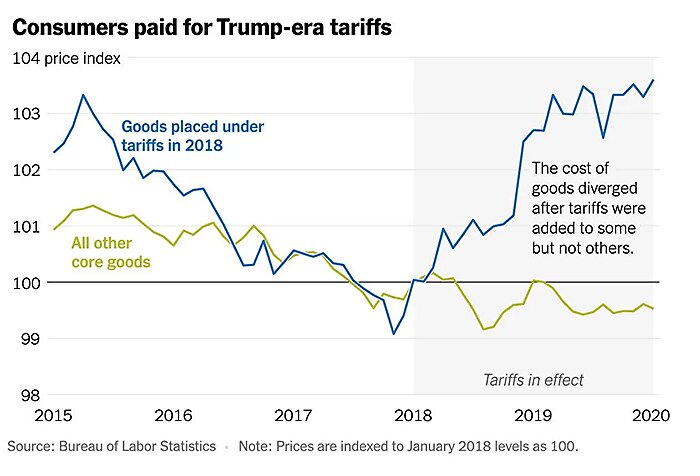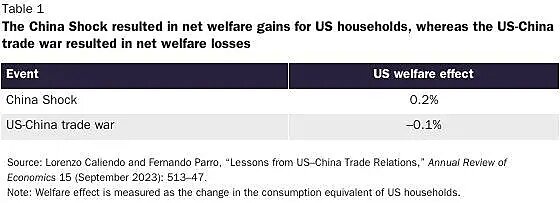Overall, World Bank data show that dozens of countries—developed and developing, big and small—have lower average tariffs (simple or weighted) than the United States does. We’re simply not some “free trade fundamentalist” outlier.
Even this benign comparison, however, overstates the “unfair” situation the United States supposedly faces because Washington uses many “non-tariff” measures to impede foreign competition. This includes subsidies, quotas, “Buy American” restrictions, the Jones Act (drink!), and regulatory protectionism like the FDA’s blockade on baby formula. We’re also one of the biggest users of “trade remedy” measures (anti-dumping, especially) and today apply more than 700 special duties on mainly manufactured goods like steel and chemicals.
It’d be great if foreign countries eliminated their trade restrictions, and U.S. trade agreements have been pretty effective in this regard. But given economic harms that U.S. tariffs impose upon Americans, there’s little good reason to wait around for other nations to do what we should be doing regardless.
Myth 8: Tariffs Are Good and Effective Negotiating Leverage to Achieve Real Free Trade (and That’s All Trump Wants)
And this brings us to the penultimate tariff myth of the day, that the United States can effectively use tariffs to create a world of “true” free trade (or something). Start with the most obvious three facts: 1) Trump-era tariffs are mostly still here (in original form or as still-restrictive “tariff rate quotas”); 2) no countries lowered their tariffs in response to new U.S. tariffs; and 3) several countries—China, Russia, the EU, India, Turkey, Canada, Mexico, etc.—actually retaliated with even higher tariffs on U.S. exports. (Some, such as Canada and Mexico, later removed their retaliation in response to the U.S. removing its steel and aluminum tariffs, but tensions persist.) As the National Taxpayer Union’s Bryan Riley notes, analysis of this retaliation shows that “a one percentage point increase in foreign tariffs was associated with a 3.9 percent reduction in U.S. exports.” So, Trump’s last tariff experiment got us less trade, not more, and we’re still paying for it.
These results are typical and just what I and others—ones not named Peter Navarro—predicted before the Trump-era tariffs were implemented. As I wrote years ago, history shows that U.S. tariffs and other protectionist measures have proven to be poor tools for opening foreign markets, doing so just 17 percent of the time they were used between 1975 and 1994. That’s because very few countries are dependent on the U.S. market (or the U.S. security umbrella) and because all of them are run by government officials who will prioritize their own domestic interests—economic and political—when new U.S. tariffs arrive. A failure to respond to those tariffs in-kind risks not only more tariffs but the appearance of geopolitical weakness before their own voters (and thus potential defeat at the ballot box). As one Canadian official just warned regarding Trump’s new tariffs, “Inevitably our government will be under enormous pressure to reciprocate. … So then we have a 10 per cent tariff on that volume of trade on American goods coming into our country, which is not particularly constructive.” Or as EU trade commissioner Valdis Dombrovskis put it, “We defended our interests with tariffs and we stand ready to defend our interests again if necessary.”
Yes, retaliation will hurt foreign officials’ economies and not everyone will retaliate, but many will because the political and strategic benefits of doing so will be viewed as far outweighing the economic and geopolitical costs.
Myth 9: Tariffs Can Replace the Income Tax
Nope.
Summing It All Up
An intellectually honest pro-tariff case would go something like this: Yes, U.S. tariffs have real and significant economic and geopolitical costs on net, but those costs are a necessary price Americans must pay to achieve a core federal government objective (typically national security). I do occasionally see this argument when it comes to China, but in general it’s most definitely not what most American protectionists are offering today. Instead, tariffs are a magical policy that’s all benefits and no costs. They protect American jobs and security, boost industry and innovation, and advance our strategic interests abroad with both enemies and allies alike. We can use them to solve any problem—even child care and the national debt!—and, perhaps best of all, foreigners will foot the bill.
You don’t need a Ph.D. to see some of the flaws in these claims. Think about this stuff for more than a second, and problems emerge: If tariffs make us money and boost the economy, why stop at 10 or even 20 percent? If tariffs don’t raise prices here, then how do they protect American workers from “predatory dumping” or “cheap labor” (or whatever)? If tariffs achieve Real Free Trade, then why do we still have so many in place, some for literally centuries? And on and on. Most of the myths shrivel in the dimmest of sunlight, yet they persist if not flourish. We thus shouldn’t expect that today’s dose of sanity will put an end to the nonsense—where demand exists, supply will follow—but hopefully it’ll make responding a little easier.
Chart(s) of the Week
Seriously, folks, just build more housing:












